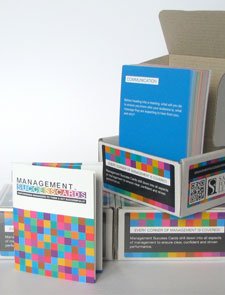Fostering a culture of continuous feedback is not just a strategy; it’s a necessity. Your role as a middle manager places you at the heart of this transformative process. A feedback-rich culture must be practiced within your team in order to create an environment of positivity and productivity, where everyone has a voice and feels heard.
The Great Resignation of 2021 blog by ClearStar tells us that employees weren’t likely to quit if their desires for their careers are listened to.
“An employer who accommodates their employees with remote work (if necessary) and show interest in trying to help them find something they enjoy doing in their job is likely to build a relationship with their employees that they are not so quick to abandon.”
This tells you that your team wants to be heard, wants to be listened to, and above all, wants to do something that they enjoy. Listening posts, sit-downs, and informal moments are great for gathering this insight. Another fantastic way to know all that is through performance evaluations and continuous feedback sessions.
Performance evaluations, though necessary, often fall short in driving real growth. The traditional once-a-year feedback model is akin to navigating with a dim flashlight — you might get where you need to go, eventually, but you’ll miss a lot along the way. The answer lies in weaving feedback into the very fabric of your team’s culture, making it a constant and constructive companion.
Why Continuous Feedback Matters?
1. Real-time Adjustments:
Continuous feedback allows for immediate course corrections. Waiting for an annual review before you address an issue is like waiting for a pot to boil; by the time you notice, it might be too late.
2. Employee Engagement:
Regular feedback fosters a sense of engagement and involvement. It shows your team that their efforts are noticed, appreciated and aligned with the organisation’s goals.
3. Personalised Development:
Each teach member is on a unique developmental journey. Continuous feedback enables you to tailor your guidance to their individual needs, unlocking their full potential.
The Feedback Training Imperative
As a middle manager, you play a pivotal role in shaping the feedback landscape of your organisation. Consider the EECC™ (Example, Effect, Coach, Commit) formula to ensure your feedback becomes a catalyst for growth:
1. Corrective Feedback Techniques: The EECC™ Formula
Ever found yourself caught between the need to convey constructive criticism and the fear of demotivating your team? Enter the EECC™ formula — tested and proven to boost your confidence as a feedback giver as well as empower the feedback receiver so they feel more valued and engaged to take ownership of the way forward, rather than just being told what to do.

The EECC™ (Example, Effect, Coach, Commit) formula provides reliable process to follow, milestones to reach and insights to look out for that indicate when to move to the next step in the conversation.
Note that while there is some logic to structuring your conversation from left to right, i.e. example, effect, coach, then commit, you may find that you may need to flex back to previous steps to ensure the feedback receiver has full awareness of the situation and is designing actions or action plans they will commit to. Learn more about EECC™ formula here.
When feedback is delivered well…
- employees’ self-image is enhanced and, therefore, they feel valued and part of something worthwhile.
- productivity increases and improves through clarity of goals and expectations and, as a result, employees use their time more effectively.
- interpersonal communication improves.
- trust deepens.
- conflict is resolved more effectively.
- resilience as a team improves
- as a leader, you are respected and valued more.
2. Behaviour-Focused Feedback
One common pitfall in feedback is veering into personal territory. Shift the focus from personality traits to specific behaviours. Instead of saying, “You’re not a team player,” opt for “I noticed that in the last team project, your communication seemed more individual-focused. Collaborative efforts would greatly enhance our collective success.”
Taking the First Step
Embracing a culture of continuous feedback starts with you. Here’s a step-by-step guide to integrating this transformative practice into your leadership approach:
1. Lead by Example:
Be the change you want to see. Demonstrate the art of giving and receiving feedback openly. Your team will follow suit.
2. Regular Check-ins:
Formalise regular one-on-one check-ins. These sessions should not only address ongoing projects but also provide a platform for feedback and discussions. See to it that when you do check-ins, you don’t micromanaged as, according to Patrick Mutabazi on his LinkedIn Article, “micromanagers are like bullies, they exert inappropriate influence over others through constant criticism and control by their excessive attention and criticism of small minor details.”
3. Feedback Training Session:
Consider organising a training session on effective feedback for your team. Equip them with the tools they need to provide constructive criticism without demotivating their peers.
4. Feedback Channels:
Diversify the channels for feedback. While one-on-one sessions are crucial, also encourage your team members to share appreciations and suggestions through written channels or team meetings.
Creating a culture of continuous feedback requires a shift in perspective and practice. It’s not a one-time effort but a journey of ongoing improvement. Your commitment to this journey will not only benefit your team but will also resonate throughout the organisation.
Remember, feedback is not just about pointing out flaws; it’s a compass guiding your team toward collective success. Embrace it, cultivate it and watch as it becomes the backbone of your resilient and thriving team. The Feedback program will provide the skills, structures and templates to equip you and your team with the confidence to provide corrective (and supportive) guidance. Check it out here.
You’ve got this and let me know if you need me to help you, I’d be delighted to if I can.
I’d love to hear your thoughts on feedback. Share your insights with me and let’s continue to learn and grow together.





